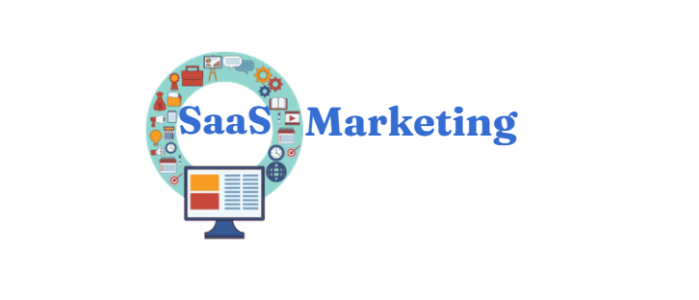- SaaS marketing meaning
- How SaaS marketing differs
- 8 best SaaS marketing strategy
- SaaS businesses and marketing
- SaaS marketing terminology
- Conclusion
Are you in the SaaS marketing world and seeking valuable insights to enhance your marketing strategy?
Get ready to unlock the secrets of building a highly effective content marketing strategy for your SaaS business in 2023.
Whether you’re a beginner or a seasoned professional, we’ve gathered SaaS marketing strategies and other business marketing tactics that you can implement right away. By incorporating these techniques, you’ll witness a surge in product signups and, ultimately, sales.
Our goal is to give you straightforward content marketing strategies that are easy to SaaS company reach new levels of success.
Let’s dive in and discover the winning strategies that will set your SaaS business apart from the competition.
What is SaaS marketing?
SaaS marketers face unique challenges.
Marketing is already tough. But imagine marketing something that you can’t physically touch or see. Or promoting a product that’s constantly evolving.
What about marketing something with a quirky or unfamiliar name? And what if only a handful of B2B companies are interested in it? It’s even more complicated when the average person doesn’t understand it.
SaaS content marketing is not for the faint-hearted. It’s a demanding task, and it stands apart from other types of marketing that people are familiar with.
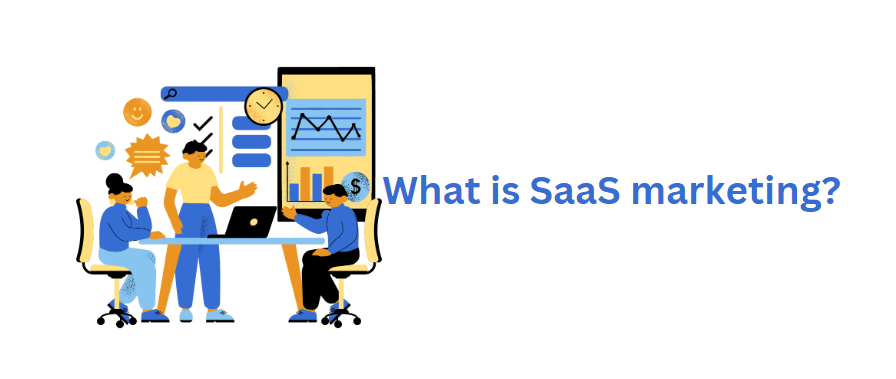
SaaS marketing involves a specific set of activities, tactics, and strategies designed to promote and sell subscription-based products to new customers.
Think of SaaS content marketing as the art of ensuring that your SaaS product stands out and meets the needs of your target customers in a way that piques their interest, encourages them to learn more, try it out, and eventually become subscribers, choosing your product over the competition. Therefore you reached customer success.
Before diving into how SaaS companies acquire customers, let’s address an important aspect of SaaS content marketing: terminology.
Just like any specialized field of marketing, SaaS marketing has its own technical terms that are worth getting familiar with. Terms such as CAC (Customer Acquisition Cost), LTV (Lifetime Value), Churn (customer attrition rate), and NPS (Net Promoter Score) play a significant role in understanding the concept and strategies behind SaaS marketing.
What are SaaS companies?
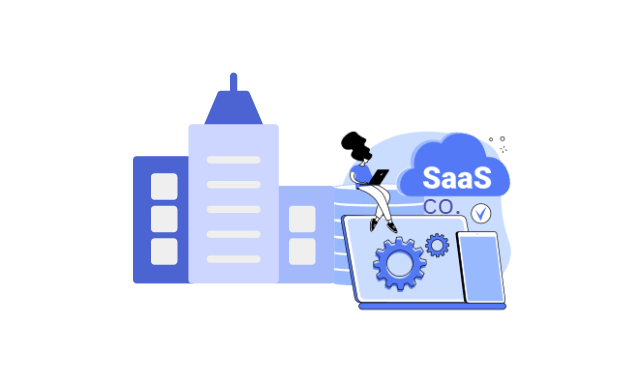
SaaS stands for “Software as a Service”.
A SaaS company is a business that provides software applications or services through a subscription model.
Customers access and use the software over the internet instead of purchasing and installing it on their own servers or devices. SaaS companies handle software hosting, updates, security, and support, offering flexibility and cost savings compared to traditional software licensing models.
Examples include project management tools, CRM systems, email marketing platforms, and collaboration software.
The difference between SaaS and digital marketing
SaaS (Software as a Service) and digital marketing are distinct concepts but can complement each other in a business context.
SaaS:
- Refers to a software delivery model where applications are hosted on a central server.
- Users access the software over the internet on a subscription basis.
- SaaS companies provide the software, handle maintenance, updates, and customer support.
Digital marketing:
- Encompasses various strategies and tactics used to promote products or services online.
- Involves leveraging digital channels such as search engines, social media, email marketing, and more.
- The marketing team aims to reach and engage the target audience.
Relationship between SaaS and digital marketing:
- SaaS companies can market digitally to promote their software products and acquire customers.
- Strategies include search engine optimization (SEO), paid advertising campaigns, content marketing, social media marketing, and email marketing.
- These tactics help increase visibility, drive awareness, engage potential customers and nurture leads.
8 best SaaS marketing strategy
1.) The benefits of giving away free stuff
In the world of physical merchandise, giving away large quantities of free products is uncommon. While a few samples for a retail store or a tiny sample in a direct mail promo may be acceptable, providing the full product for free is unheard of.
However, when it comes to SaaS marketing, giving away free products or services is not only common but also a highly effective strategy.
Offering a free trial is a widely accepted approach for SaaS customer acquisition and onboarding.
The free model comes in various forms, such as free trials, trial-to-paid conversions, trials with or without credit card information, freemium models, 90-day free trials, and limited versions for free.
This approach is prevalent across the SaaS landscape. If you explore various SaaS products, it’s highly likely that you’ll encounter a free trial option available somewhere.
Regardless of the specific iteration, the common element is “free.” How is SaaS marketing the driving force behind the engine?
By offering free trials, SaaS companies entice potential customers to experience the product firsthand, understand its value, and ultimately convert into paying customers.
The concept of giving away free products plays a pivotal role in SaaS marketing strategies and serves as a powerful tool for attracting and engaging prospective customers.
Here is the landing page for Trustindex:
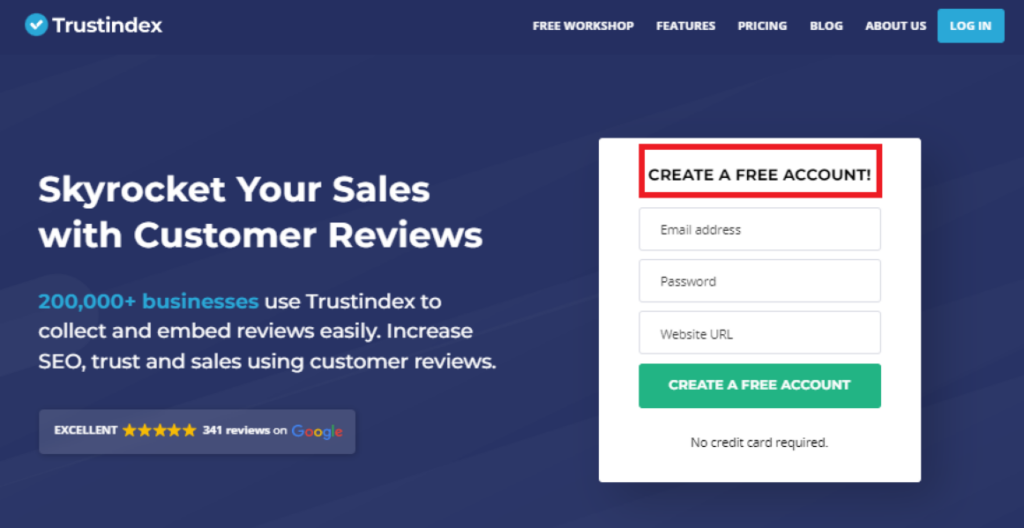
Free trial at Amazon Prime Video:
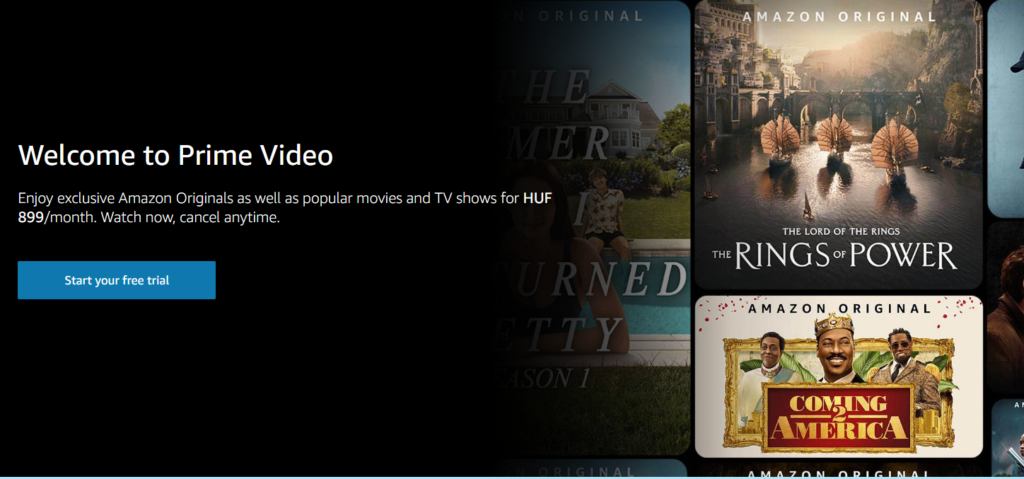
2.) The rapid sales cycle of SaaS
In the world of business-to-business (B2B) sales, the term “B2B sales” often goes hand in hand with “long sales cycles.”
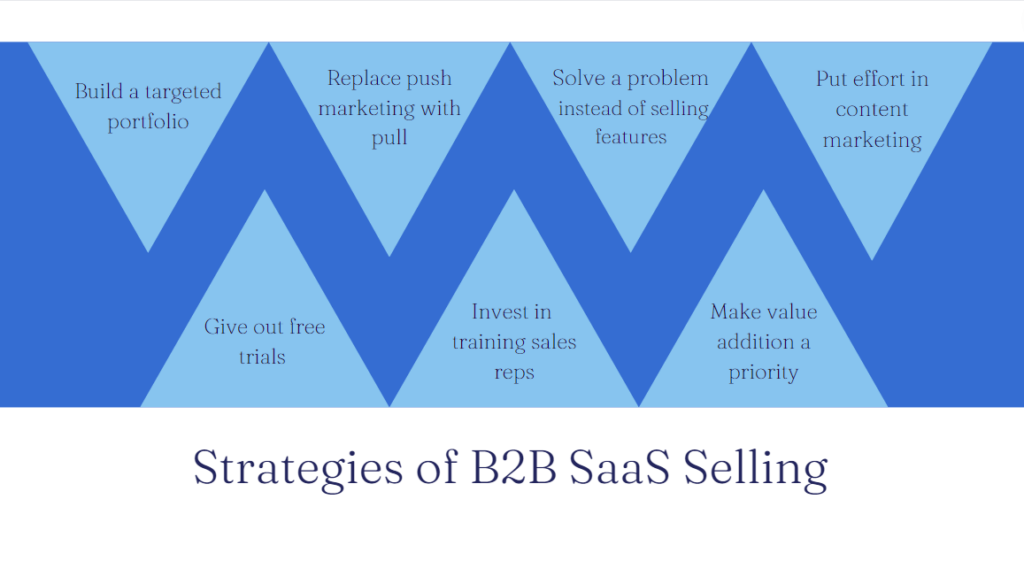
SaaS sales are all about speed and efficiency.
Gone are the days of lavish events, expensive outings, and elaborate wining and dining. The process of purchasing SaaS is swift, transactional, and straightforward.
The inherent nature of software contributes to a rapid pace. The software industry is a continuously evolving domain, marked by constant changes, advancements, and setbacks.
If a sales process lasted six months, there could be at least twelve iterations of the software during that timeframe.
Moreover, self-service SaaS environments foster quick decision-making due to the affordable pricing and low complexity of most contemporary SaaS offerings.
To achieve increased revenue, value, and profit, a higher velocity in the sales process is key.
It’s worth noting that a short sales cycle may make some buyers apprehensive, particularly those accustomed to the slow pace of non-software purchases.
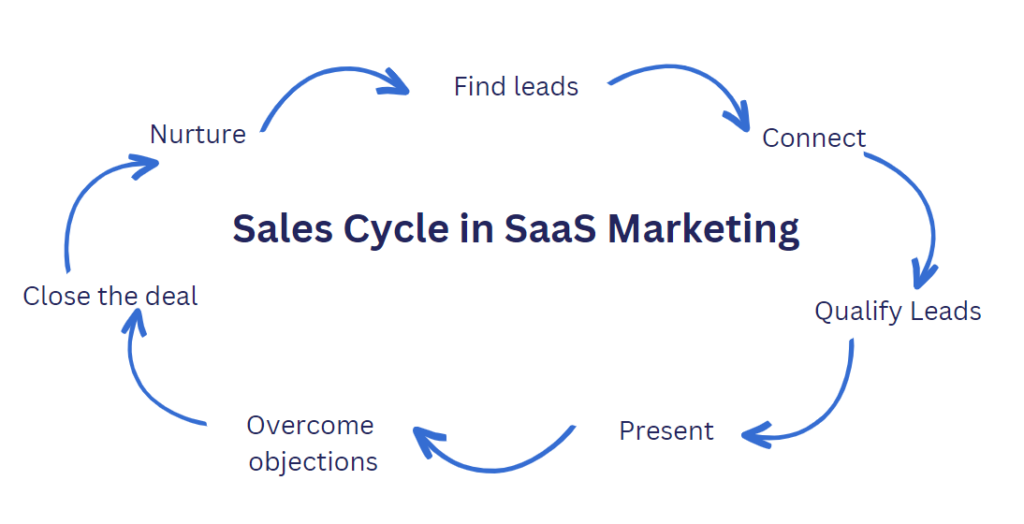
As a marketer, it’s important to provide reassurance and ample information. However, if you lose a few sales because the buyer isn’t ready, don’t worry. There are plenty of other buyers who will make their decisions in a matter of minutes or less.
3.) The power of information in SaaS marketing
SaaS marketing relies heavily on the availability and dissemination of information. It’s remarkable how crucial this aspect is, yet it often goes unnoticed.
Take a moment to consider some of your favorite blogs and information sources. You may not realize it, but much of that information comes from either SaaS sellers or SaaS providers themselves.
Let’s take the example of Buffer. Their widely recognized blog serves as an information product that supports their social media service. Yes, they want you to read their blog, but more importantly, they want you to try their product.
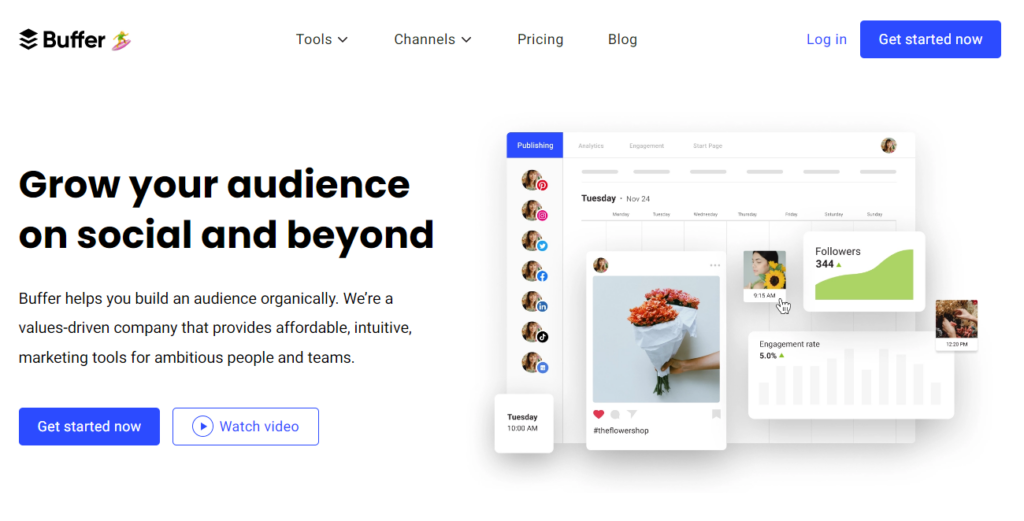
Another prime example is HubSpot, renowned for its expertise in providing valuable information. HubSpot’s marketing power stems from its prowess in delivering informative content.
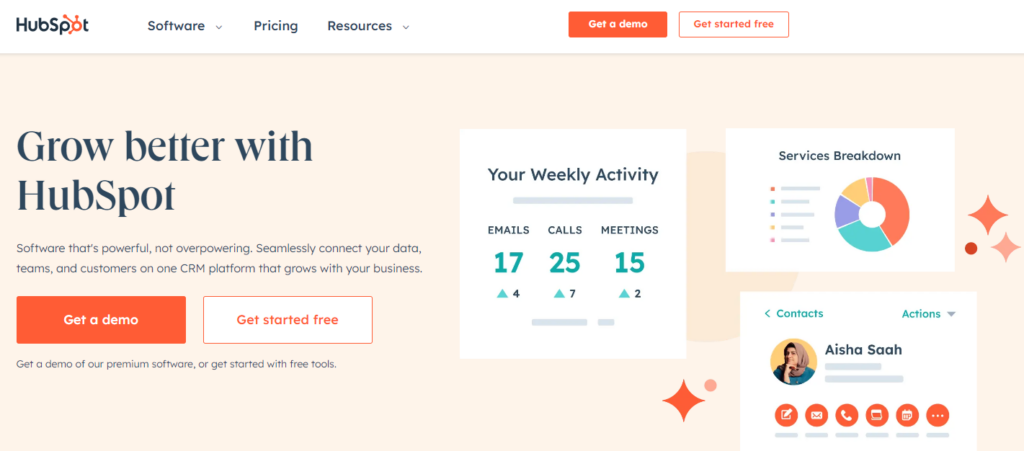
For B2B SaaS marketers, it’s important to view themselves not just as marketers, but as industry savants—the individuals who possess and share valuable information.
Whether you’re blogging, tweeting, speaking, or engaging in any other marketing activities, your focus should be on information propagation.
Most SaaS products are designed to provide information, and as a SaaS marketer, your primary responsibility is to offer information that leads prospects to the ultimate source of knowledge—the SaaS product itself.
Google Analytics and SaaS
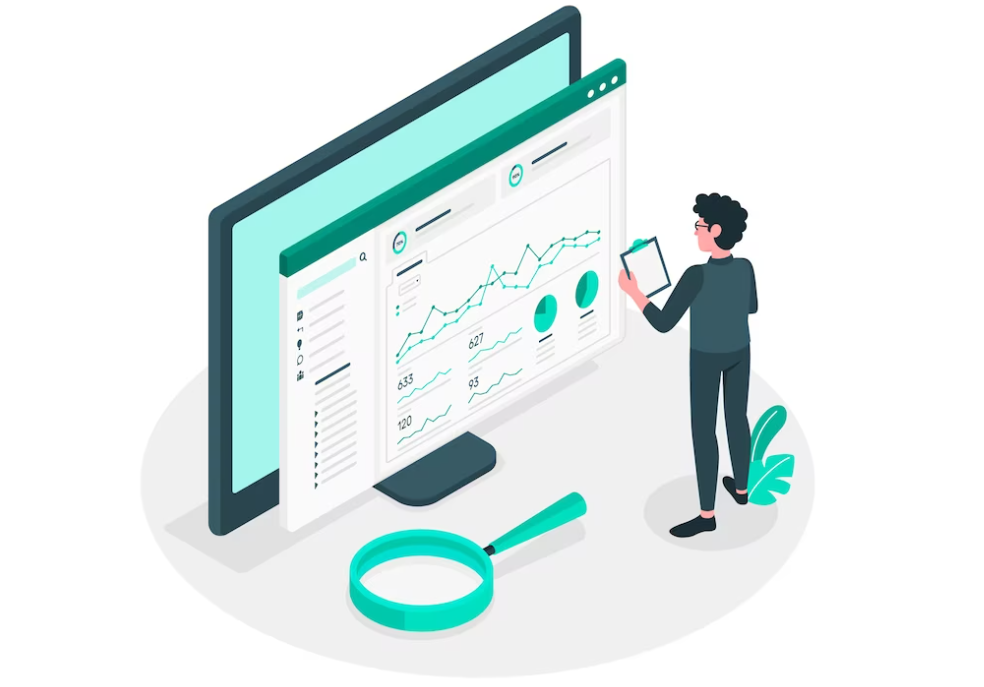
Google Analytics is a powerful tool that can be used by SaaS businesses to track and analyze website and app data. It provides valuable insights into user behavior, traffic sources, conversion rates, and other important metrics.
By integrating Google Analytics into their SaaS marketing strategy, businesses can gain a deeper understanding of their audience, optimize their marketing campaigns, and make data-driven decisions to improve overall performance and user experience.
4.) SaaS marketing strategy: Customer retention
In the world of SaaS, the majority of your revenue stems from your existing customers.
According to Gartner, an astounding 80% of all future revenue will come from just 20% of your current customers. Remarkably, by increasing customer retention by a mere 5%, you can boost your business’s profitability by a significant 75%, as highlighted by researchers at Bain & Co.
Customer retention holds paramount importance in the SaaS industry, surpassing the significance found in other sectors.
When you meticulously analyze and assess this data, the undeniable power and value of customer retention become overwhelmingly apparent.
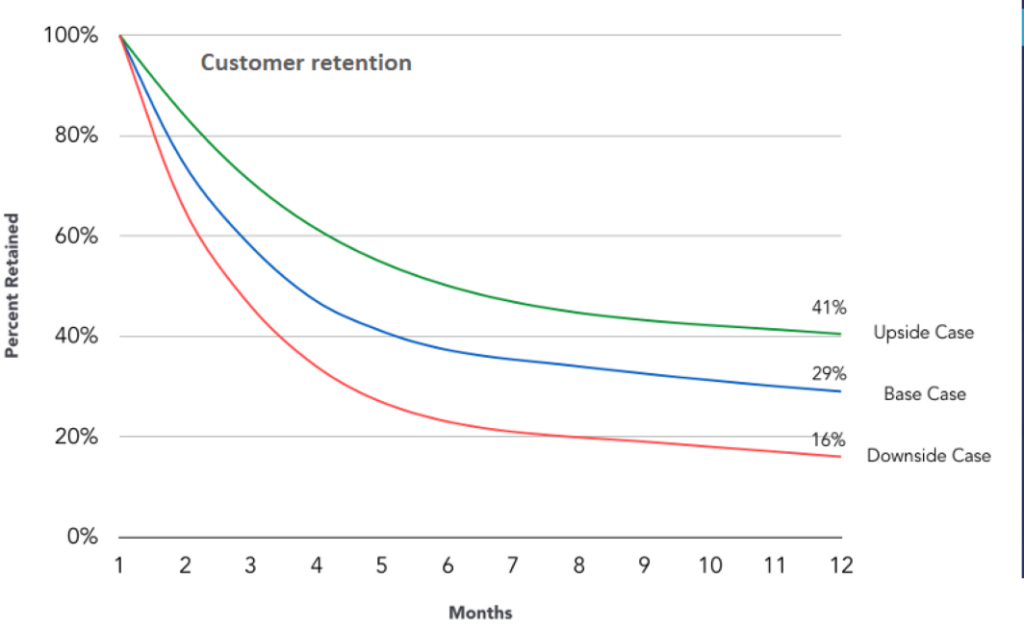
Retaining customers holds immense power, making it imperative for you to prioritize retention over customer acquisition in your SaaS content marketing strategy.
5.) The key to success: Service in SaaS
The acronym SaaS stands for “Software as a Service.” However, I propose that we shift our focus and place emphasis on the service aspect.
While the software itself is undoubtedly important, flawless, powerful, and awesome, it is the service component that should be celebrated as the epitome of excellence.
Often, SaaS tends to prioritize developers and programmers, acknowledging their undeniable importance. However, it is the service providers—help desk, sales teams, bloggers, marketers, and more—who constitute the front-facing service component of a SaaS.
This realization has profound implications for how you allocate your time and resources. To sell your SaaS effectively, promote the exceptional service you offer. Make customer satisfaction your top priority in every aspect of your thinking and strategizing.
Maintain frequent and meaningful interactions with your existing customers, going above and beyond to exceed their expectations.
By prioritizing service and nurturing strong customer relationships, you pave the way for long-term success in the SaaS industry.
6.) Put effort into search engine optimization (SEO)
Dedicating time to your website’s SEO is crucial. A well-executed SEO strategy is highly effective in driving site traffic.
SEO involves optimizing your site to achieve higher rankings on search engine results pages, resulting in increased traffic. Implementing an effective SEO SaaS marketing plan will significantly benefit your website’s traffic.
7.) Referral marketing in SaaS
Referral marketing is similar to digital word-of-mouth advertising. It involves leveraging satisfied customers to recommend your service privately or publicly, such as on LinkedIn.
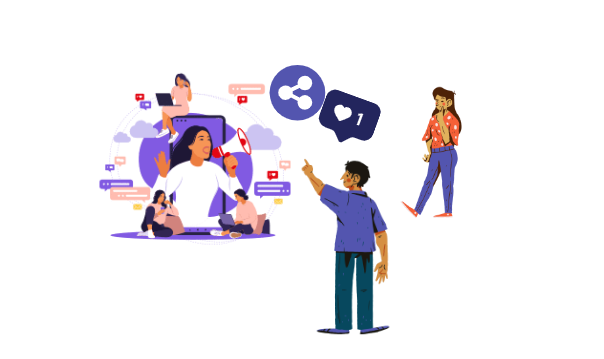
This strategy is highly effective in SaaS marketing as it brings in qualified leads who already have trust in your business through recommendations. B2B SaaS brands benefit from this approach as it helps facilitate more thoughtful decision-making.
To encourage referrals, implementing a referral program with enticing incentives or rewards is essential.
For instance, offering additional features or upgraded software levels in exchange for referrals, similar to Dropbox’s approach of granting extra storage space for inviting friends.
8.) Focus on what truly matters in SaaS content marketing
We’ve unnecessarily complicated SaaS marketing.
The truth is, SaaS marketing doesn’t have to be that complicated.
I understand your concerns about customer retention, acquisition costs, metrics like MMR, CLTV, CLV, churn, attribution analysis, and niche market awareness. But let’s take a step back.
I’m not dismissing the importance of those factors, but here’s the secret: Once you prioritize the most essential elements, everything else falls into place.
Yes, keep those considerations in mind, but they aren’t the core or the entirety of SaaS marketing.
So, what are the most important things?
It’s simple. Brace yourself. There are just two.
- Awesome products.
- Killer support.
When you focus on these two aspects, the rest of your marketing efforts naturally fall into line.
You might remain skeptical until you experience it firsthand. Create remarkable software that wows your audience. Provide outstanding customer service, with or without chocolate cakes, and witness the magic unfold.
Imagine having software that practically sells itself. That’s what awaits you when you unleash incredible software and offer exceptional service.
Embrace the power of simplicity and prioritize what truly matters in SaaS marketing.
Companies need SaaS marketing strategies
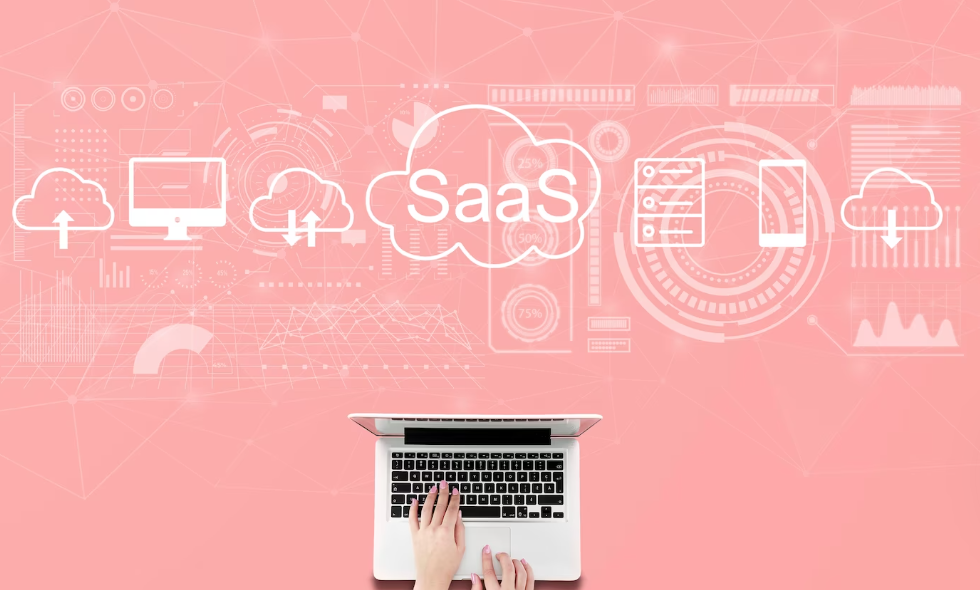
B2B SaaS marketing encompasses various approaches, all of which are crucial for achieving success, regardless of the specific strategy employed.
Operating in the SaaS industry presents unique challenges due to its highly competitive nature. Depending on your circumstances, you may find yourself contending with dominant players that hold a stronghold on the market or targeting a niche audience that requires tailored communication channels.
Regardless of the situation, SaaS inherently involves constant evolution.
To remain relevant, continuous upgrades and enhancements to your services are essential, as well as incorporating new features and functionalities. Your marketing efforts must align with the realities of the software development cycle within your specific business context.
The good news is that there are always solutions.
By leveraging the right expertise, you can develop an effective SaaS marketing strategy made to your organization. Regardless of the nature of your business, making wise investments in your SaaS marketing budget will propel you toward achieving your goals.
Marketing terminology of SaaS explained
Customer Lifetime Value (CLV, CLTV, or LTV)
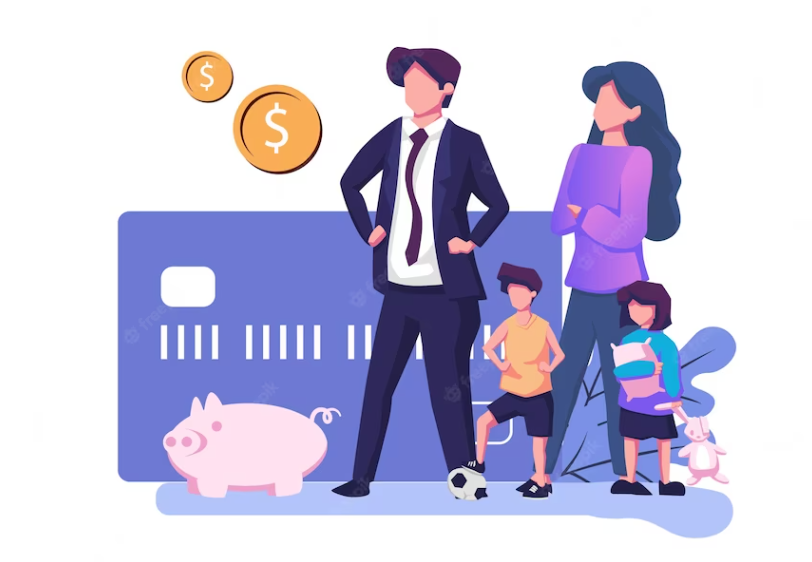
Customer lifetime value (CLV) represents the average value of a single paying customer to your business over their entire engagement with your products or services. To calculate CLV, you need to consider factors such as the subscription price, length of the subscription, and the number of customers.
For instance, if you offer a single subscription priced at $30 per month and the average customer remains subscribed for 6 months, the CLV would amount to $180.
The formula to calculate CLV is: Average Subscription Price * Average Customer Lifetime (Length of Subscription) / Number of Customers.
However, when you have multiple subscription prices, the calculation becomes more intricate as it requires considering the variations in pricing and customer lifetimes.
Customer Acquisition Cost (CAC)
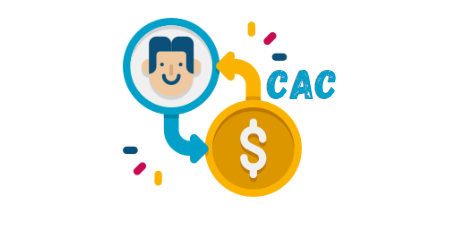
Customer acquisition cost (CAC) is the monetary investment required to get a new paying customer through a specific marketing channel. In straightforward words, it represents the amount of money you spend to gain each customer. For instance, if you invest $1,000 in Google ads and acquire 10 customers as a result, your CAC would be $100.
The formula to calculate CAC is: Total expenses on a marketing channel / Number of paying customers obtained.
When it comes to using organic traffic through channels such as content marketing, organic search, or organic social media, accurately measuring CAC can be challenging due to various factors at play.
CLV: CAC Ratio
The CLV: CAC ratio is a key metric that compares the customer lifetime value (CLV) to the cost per customer acquisition (CAC) in order to assess the profitability of acquiring and retaining customers. This ratio measures how much the CLV exceeds the CAC.
To calculate the CLV: CAC ratio, divide the CAC by the CLV using the formula: CAC / CLTV.
For example, if your customer acquisition expense is $60 and the average customer lifetime value is $180, the CLV: CAC ratio would be 3. This means that the customer’s lifetime value is three times greater than the cost to acquire that customer.
The CLV: CAC ratio serves as an important benchmark for evaluating the effectiveness and efficiency of your marketing strategies. A higher ratio indicates a healthier financial outlook, as the revenue generated from customers exceeds the investment made to acquire them
Customer Churn Rate
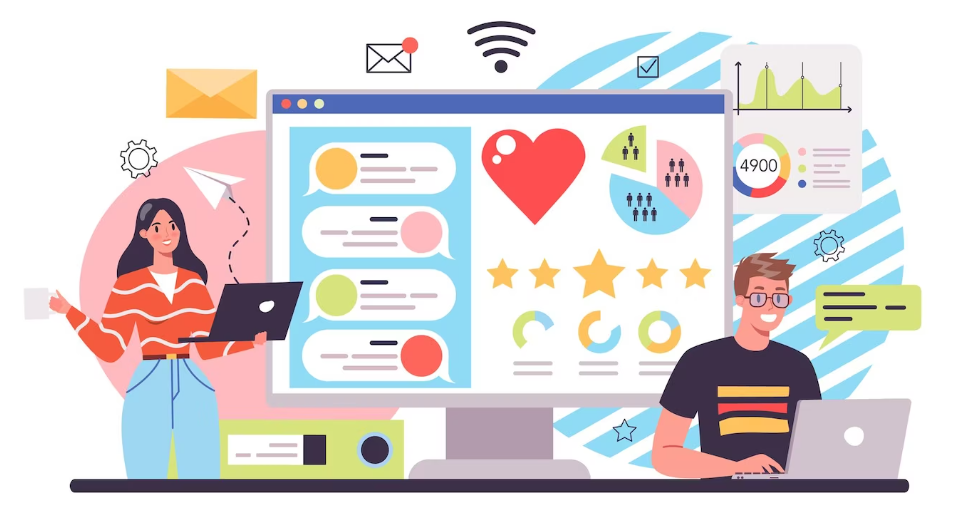
Customer churn rate is a crucial metric that measures the percentage of customers who pay that cancel their subscription within a specific period of time. This rate provides valuable insights into customer retention and the overall health of a SaaS’ business model.
To calculate the churn rate, determine a designated time period and divide the number of customers who left during that period by the total number of your SaaS customers. Multiply the result by 100 to express it as a percentage.
For example, if you had 100 customers leave out of a total of 10,000 existing customers in a month, your monthly churn rate would be 1%.
It’s important to note that when calculating churn separately from growth, newly acquired customers should be excluded from the total count. This ensures a more accurate representation of customer retention.
Net Promoter Score
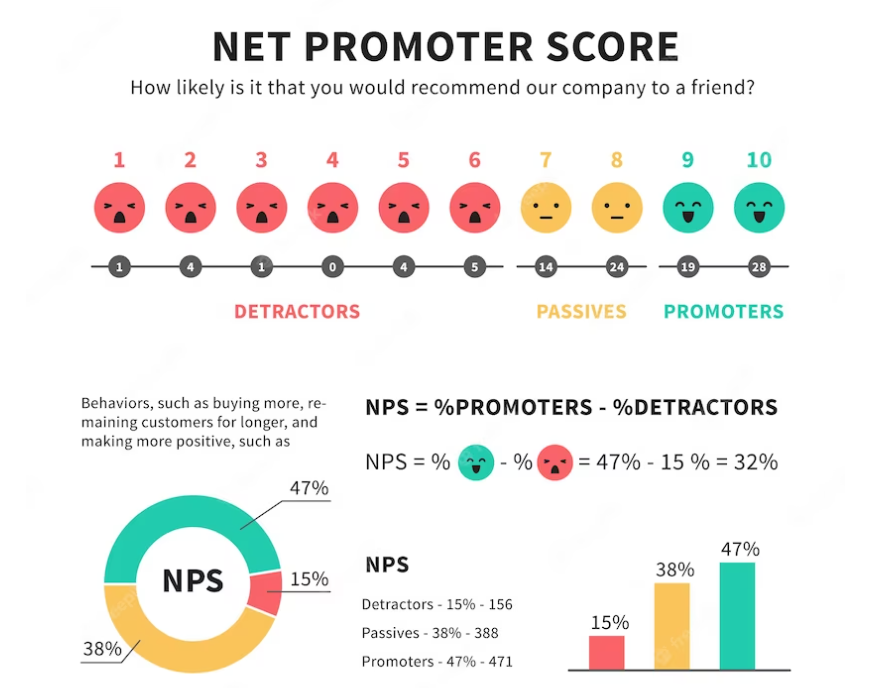
The Net Promoter survey is a widely embraced tool utilized by startups and SaaS businesses to assess a customer’s likelihood of promoting their product or service. This survey consists of a single, straightforward question that asks customers to rate how likely they are to recommend the product.
Based on their responses, customers are classified into three categories:
1.) Promoters
Customers who rate their likelihood of recommendation as 9 or 10 are considered promoters. These individuals are highly satisfied with the product or service and are likely to actively advocate for it, sharing positive information with others.
2.) Detractors
Customers who provide a rating of 1 to 6 fall into the detractor category. Detractors are dissatisfied customers who may express negative sentiments about the company or its offerings, potentially impacting its reputation.
3.) Neutrals
Customers who select a rating of 7 or 8 are categorized as neutrals. While they are generally satisfied with the product, they are less likely to actively promote or share information, be it positive or negative.
The Net Promoter Score (NPS) is derived by subtracting the percentage of detractors from the percentage of promoters. The resulting score provides a quantifiable measure of customer loyalty and satisfaction.
Calculating Your NPS
Suppose you administer the survey to 100 customers, and all of them provide responses. Among the respondents, 15 customers rate their likelihood of recommendation from 1 to 6 (detractors), 30 customers rate it as 7 or 8 (neutrals), and 55 customers rate it as 9 or 10 (promoters).
To calculate the NPS, you subtract the percentage of detractors from the percentage of promoters:
NPS = % Promoters – % Detractors
Customer Onboarding

Customer onboarding is crucial in SaaS businesses. It involves guiding free trial users to become paying customers by actively engaging with the service.
Engaging users during the trial period increases their likelihood of conversion. Once users become paying customers, their reliance on the product or service influences their retention. Integrating the service into their workflows increases the chances of long-term subscription.
A comprehensive onboarding process facilitates user adoption, highlights value, and establishes a strong customer relationship. Smooth onboarding enhances satisfaction, boosts retention, and drives sustainable growth.
Monthly Recurring Revenue (MRR)

Monthly Recurring Revenue (MRR) is a vital metric in SaaS business models, representing the cumulative monthly fees from paying customers. It reflects the predictable revenue stream from subscriptions, excluding one-time and non-recurring payments.
Tracking MRR helps assess financial health, monitor subscription changes, and inform pricing and expansion strategies. Analyzing MRR trends reveals patterns, assesses customer acquisition impact, and guides revenue optimization.
MRR is a key performance indicator for forecasting growth, making data-driven decisions, and achieving sustainable profitability in the competitive SaaS market.
Conclusion
Just like software keeps evolving, so does the marketing process for SaaS. It’s possible that this article will become outdated in a few months, but I don’t think so.
In the last paragraphs, I’ve summarized some practical advice that any SaaS provider or marketing manager can follow: focus on two key things – having great products and providing great service. These are the core elements of a successful SaaS marketing strategy.
SaaS marketing has similarities to other types of marketing, but it’s unique in the way everything is tightly interconnected. The development of the product, customer support, revenue models, and marketing all work together in SaaS marketing.
Frequently Asked Questions
SaaS marketing refers to the specific strategies and tactics used to promote and sell software-as-a-service (SaaS) products.
It involves targeting and reaching out to potential SaaS customers, creating awareness about the SaaS offering, showcasing its value and benefits, and ultimately driving conversions and customer acquisition.
SaaS marketing focuses on highlighting the unique features, functionality, and advantages of the software, while also addressing customer needs and pain points. The goal is to attract, engage, and retain customers, maximizing the growth and profitability of the SaaS business.
SaaS B2B marketing, or business-to-business SaaS marketing, refers to the marketing strategies and tactics employed to promote and sell software-as-a-service (SaaS) products to other businesses.
It involves targeting and engaging with other companies as the customer base, understanding their specific needs and requirements, and showcasing how the SaaS solution can address their challenges and provide value.
SaaS B2B marketing focuses on building relationships with business decision-makers, demonstrating the benefits and ROI of the SaaS product, and driving conversions and customer acquisition within the B2B market segment.
The ultimate goal is to generate leads, close deals, and establish long-term partnerships with other businesses.
To start SaaS marketing, follow these key steps:
1.) Understand your target audience
2.) Define your value proposition
3.) Create compelling content
4.) Build a strong online presence
5.) Implement effective lead-generation strategies
6.) Provide exceptional customer support
7.) Measure and analyze results
Remember, SaaS marketing is an ongoing process that requires continuous optimization and adaptation based on customer feedback and market trends.
SaaS refers to a software delivery model, while marketing is the process of promoting and selling products or services. SaaS is a product or service that can be marketed using various marketing strategies.
